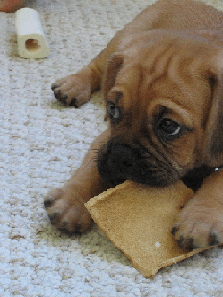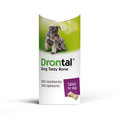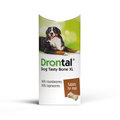It is likely that at some point in your dog’s life, crate-training is going to be necessary. While not everyone agrees with crating a dog, when used properly, a crate is an effective tool for training and managing your dog's behaviour, if only for a limited time. Not only are crates helpful from a short-term training and management perspective, but they give your dog somewhere permanent to sleep or retreat to when things get a bit much.
So, why would you crate your dog? There are several reasons why crating might be necessary; to house-train, to prevent destructive behaviours and to contain your dog to one area overnight or when you’re at work. A crate can also be used for transporting your dog from one place to another. It is important to stress that a crate should never be used as a means of punishment, but for safety reasons alone.
The length of time a dog should be crated for is very much dependent on its age, size and anxiety level. Dogs with separation anxiety should never be crated, for instance, as they can become manic and put themselves at risk, while older dogs shouldn’t actually need to be crated (as they should hopefully be trained).
Large, active dogs may also find it harder adjusting to a crate as they need more room to manoeuvre themselves. Some dogs respond well to crate-training and adjust relatively quickly, while others will be happier with a more gradual introduction.
How do you crate-train?
When you've chosen the perfect crate, bring it home and make it as comfortable and cosy as possible. Start by leaving the door open and allowing your puppy to explore it of its own accord. Hide tasty treats inside for your pup to find and place a soft blanket down for your dog to snuggle up against. Begin introducing a consistent cue to get your dog inside the crate i.e. say ‘bed!’ and throw a treat inside the crate for your pup to go after.
When your dog is inside enjoying its tasty morsel, close the door and wait a moment. Before letting your dog back out, reward it with another treat. This will condition your dog to expect good things when inside the crate. On opening the door, avoid all displays of emotion; you might well be excited at your dog’s good training but don’t let it show and certainly don’t reward your dog for coming out.
When it comes to feeding time, place the bowl of kibble inside the crate (preferably at the back but if your puppy is uncomfortable with venturing in fully, place by the door and gradually move back). Leave the door open the first few times or until your dog seems comfortable eating inside the crate, then close the door. Increase the amount of time the door is closed for until your dog is happy inside for a good few minutes.
 It is important that if you are going to crate your dog you do so for no longer than 1-2 hours at a time – especially important if you are crate-training a puppy. If you work all day, it is unfair to expect your dog to stay crated from dawn to dusk. Ideally, make sure your dog is released every hour or so. Popping home at lunchtime to let your dog use the toilet and stretch its legs isn’t possible for everyone, so have someone come in at midday to pay your dog a visit.
It is important that if you are going to crate your dog you do so for no longer than 1-2 hours at a time – especially important if you are crate-training a puppy. If you work all day, it is unfair to expect your dog to stay crated from dawn to dusk. Ideally, make sure your dog is released every hour or so. Popping home at lunchtime to let your dog use the toilet and stretch its legs isn’t possible for everyone, so have someone come in at midday to pay your dog a visit.
Some people opt for using a play-pen instead, as this affords more space for larger dogs to feel comfortable in. Dogs that are left for long stretches can develop behavioural problems and may come to associate their crate with a negative experience, making them reluctant to go near it in future. To combat this, make the crate as inviting as possible. Place an Adaptil diffuser in the room to help reinforce the feeling of security.
This includes choosing the right size – a crate too small is going to be cramped and uncomfortable, while a crate too big may encourage your dog to separate one side for sleeping and another for littering. Ideally, your dog should be able to sit, stand and turn around in its crate.
The crate should be sheltered from direct sunlight and draughts, should be chew-resistant (and unlikely to pose a choking hazard), and should contain a comfortable inner lining for your dog to nestle into. Newspaper can encourage your dog to toilet in the crate so avoid using this as lining.
Place your dog’s favourite, chew-resistant toys inside and a special treat that only comes out when the crate is in use. This will teach your dog that being in the crate brings rewards. Take the treat away as soon as your dog is let out. If your dog is going to be crated for a couple of hours, don’t forget to place a bowl of water inside.
If your dog cries or kicks up a fuss when left alone, you have probably introduced the closed crate too quickly. Take your time when training your pup and try to pick up on any feelings of stress or discomfort. If done properly, your dog should soon learn to love its crate and will go there of its own accord. In time, you may even be able to run errands while your dog is at home - uncrated!
If you have any useful tips for crate-training your dog, please share them with our other readers :) Feel free to contact me directly with any further questions and/or suggestions for future blog posts: [email protected]
Written by: Hannah








